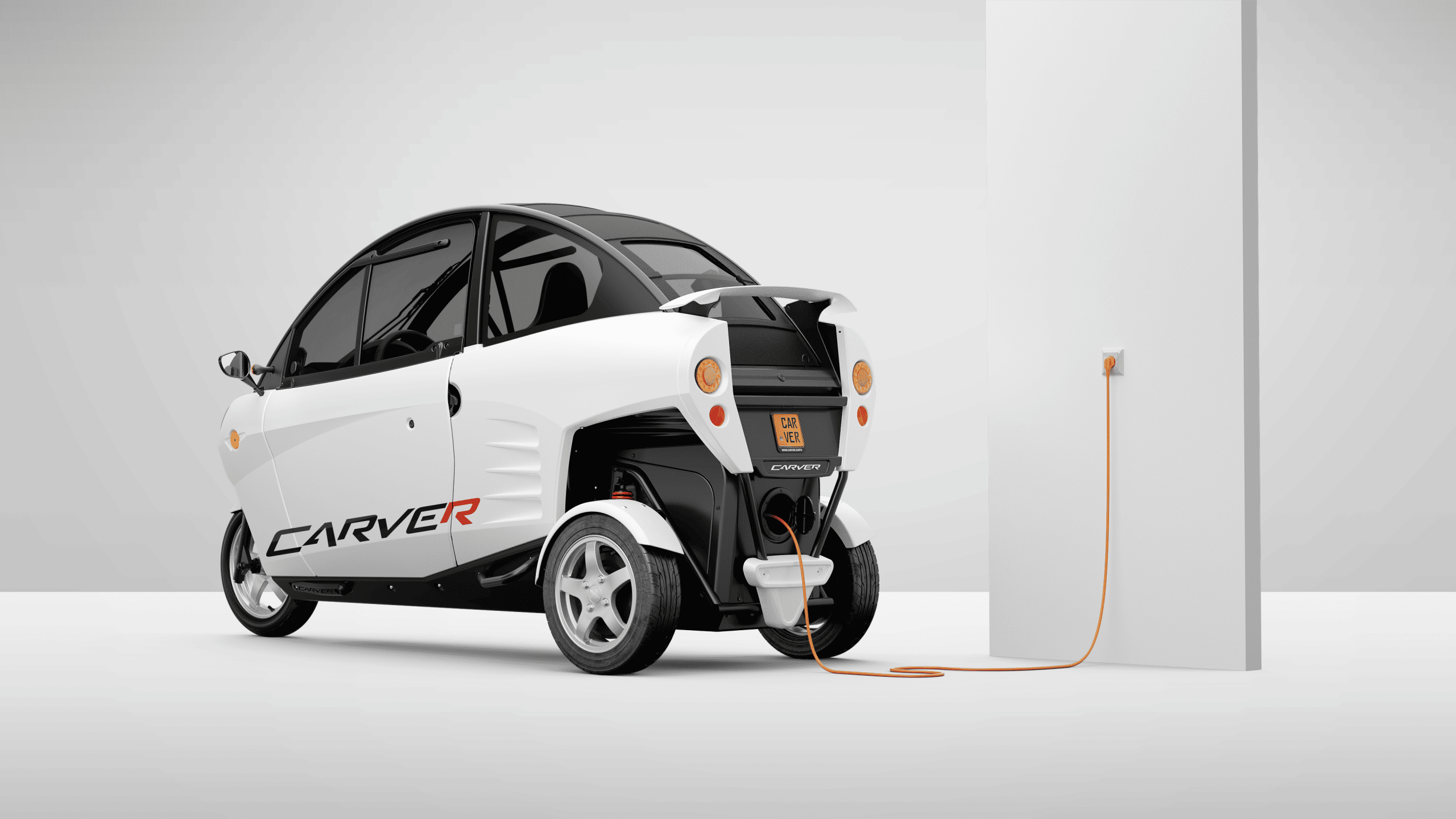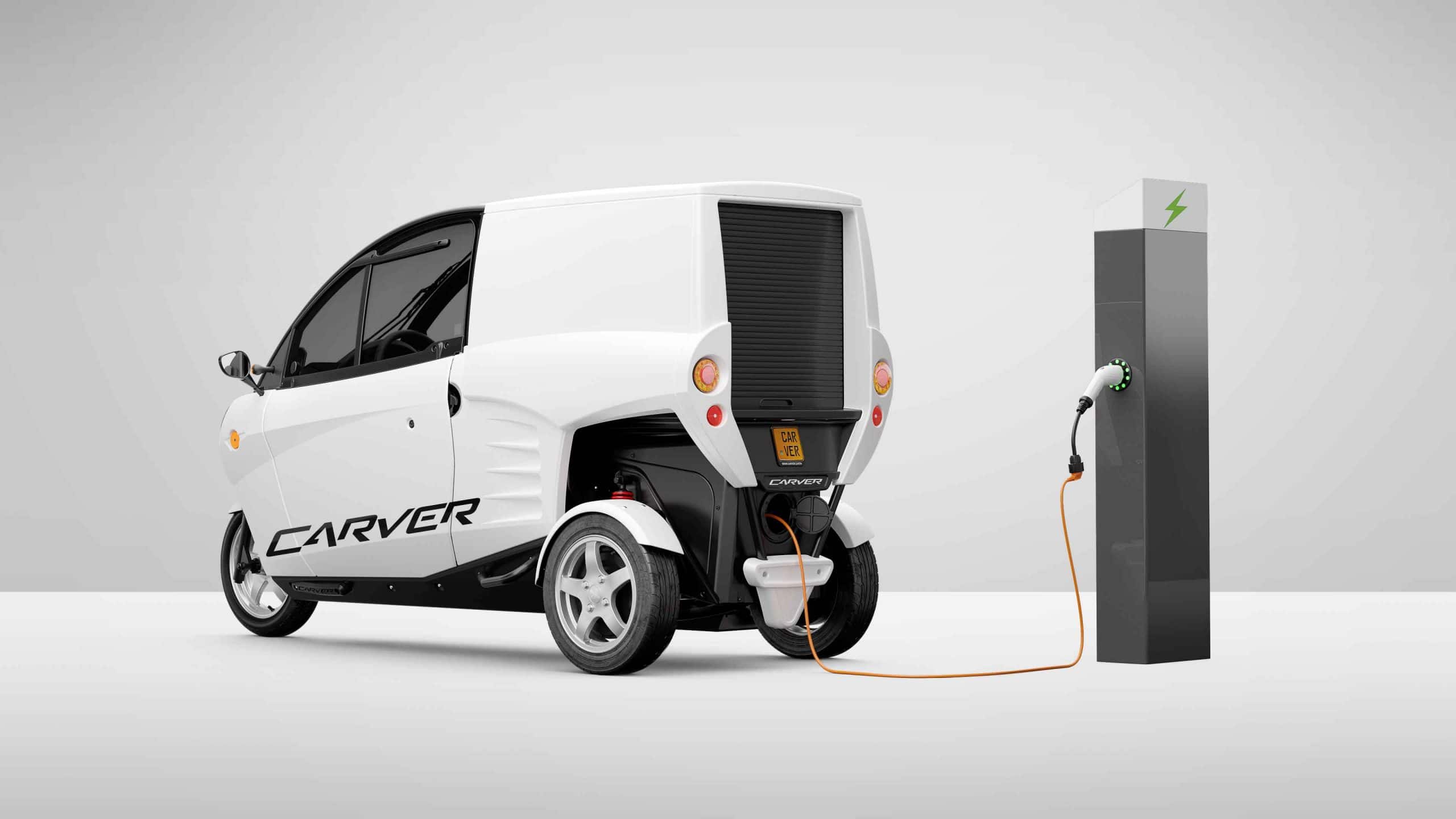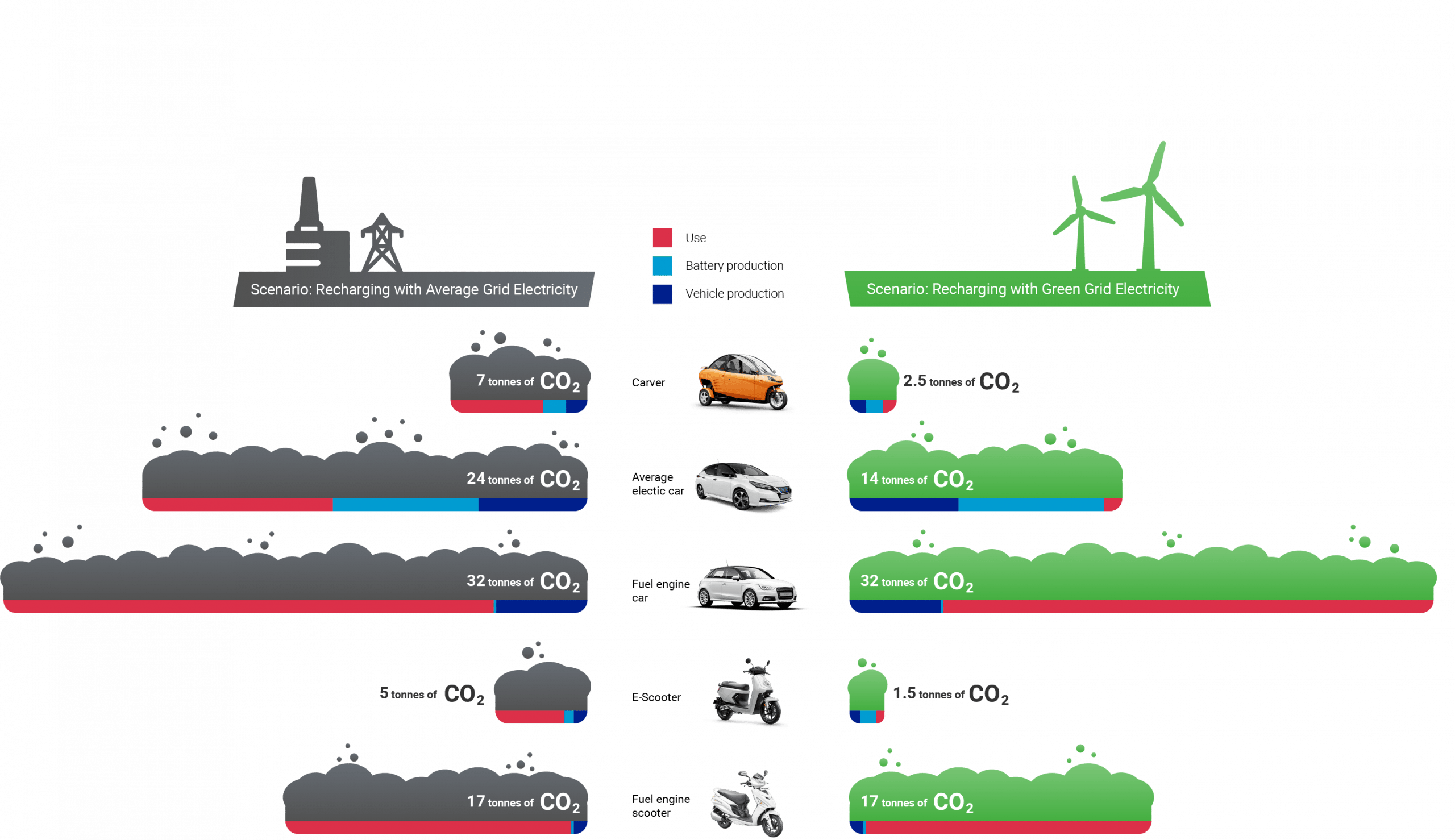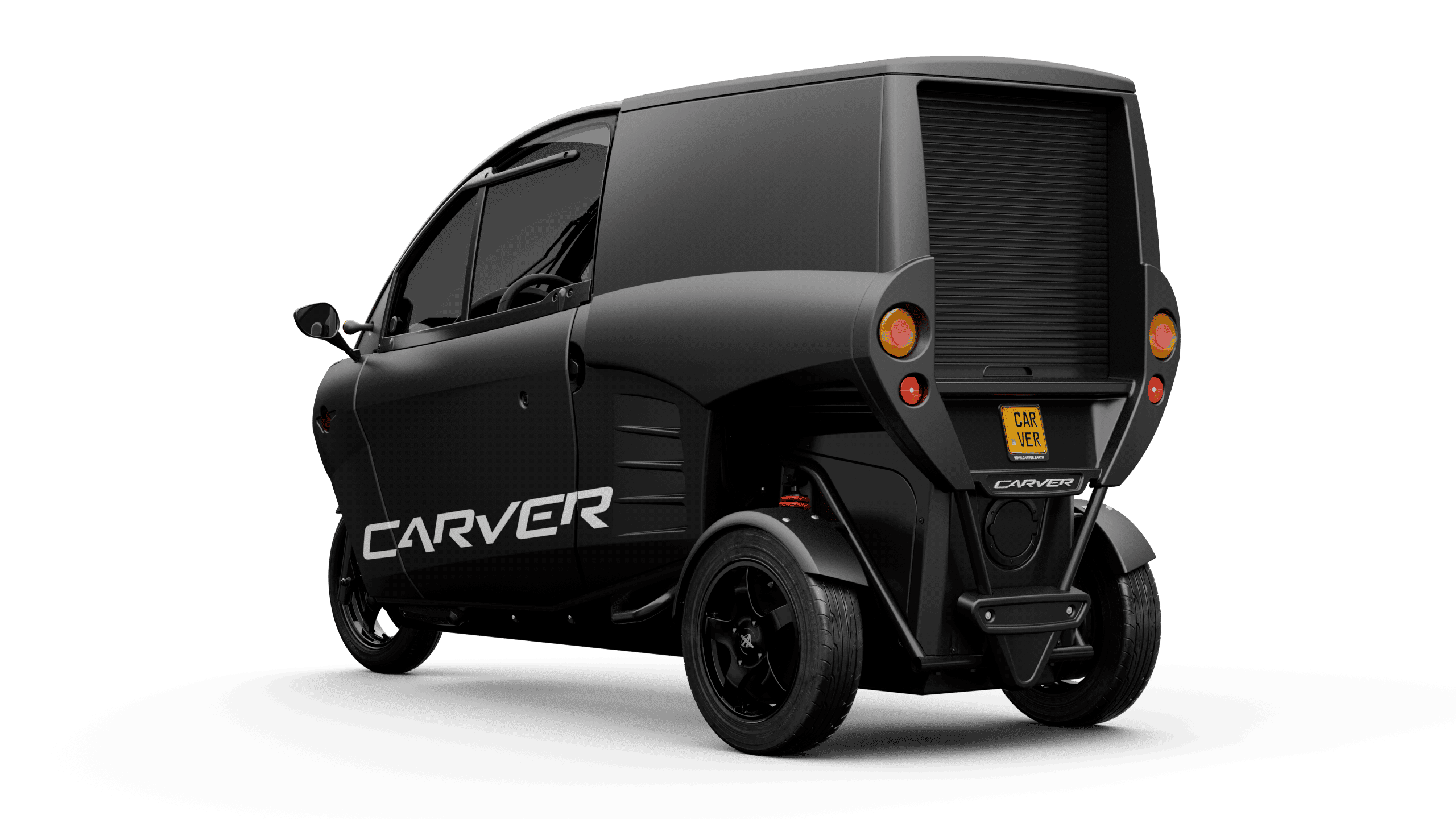Sustainable vehicle
Just imagine: easy charging, access to all environmental zones, low cost and ready for the future. These are just some of the benefits of choosing a responsible mobility choice. We’d be happy to tell you more about the convenience the Carver.
Charging
Wherever you are, you can easily recharge the Carver. Depending on the type of Carver, the charging time of a full battery is between 3.45 – 5 hours. If you consider a battery of 80% sufficient, you will be ready to go after 3-4 hours. You can keep an eye on the charging status via the dashboard display.

Charging with the 230V plug
The battery of the Carver can easily be charged at home with the 230v plug. The charging cord is at the back of the Carver, you can connect it to a regular power outlet. The Carver cannot drive when the charging cord is connected.
Charging at a charging station
Are you on the move or don’t have access to a power outlet at home? Then you can also charge the battery at a charging station. You do this in combination with an adapter cable.


CO2 footprint
Low in production and use
A small CO2 footprint is becoming increasingly important and vehicles have a large share in this. The Carver has a small CO2 footprint, which contributes to the sustainability of your company. For example, the footprint of a Carver using gray electricity is 5 times smaller than that of a gasoline car. With green electricity this is even 14 times smaller!

E-mission free zones
No problem with the Carver
By January 1, 2025, at least 30 cities must have established a zero e-mission zone. This will eliminate polluting commercial vehicles and trucks.
With the Carver and Carver Cargo, you can go e-mission free downtown.
Range of
Depending on the type of Carver, the range is between 100 and 130 km. As with all batteries, the actual range can vary through use. The actual range is influenced by, among other things, the loading weight, your driving style, the weather conditions and the use of the brake. These factors can influence the energy consumption of electric motors.

Weather conditions
Colder weather conditions affect the energy consumption of the battery. At lower temperatures, a battery is less able to retain energy. This can result in a shorter driving range in winter than in summer.

Driving style and traffic situation
Your driving style and traffic conditions can reduce your actual range. For example, driving at high speeds costs more energy and the battery will drain faster. Of course it is great to drive at full speed in the Carver. If you want to drive as many kilometres as possible with your battery charge, it’s better to drive a bit slower. Also factors like lots of braking, heavy loading weights, tyre pressure, the road surface and the use of ventilators will increase the battery’s energy consumption.

Charging and braking
Did you know that the Carver can recharge itself by braking? This is also called regenerative braking. In an electric vehicle, it is not always necessary to use the brake pedal to brake. Braking can also be done by simply releasing the gas pedal, the speed then gradually decreases. As soon as you release the gas pedal, the electric motor automatically brakes and energy is recovered. Braking with the brake pedal is only necessary in emergency situations or to bring the Carver to a complete stop. In this way you can get even more kilometers out of the range of the Carver. Another advantage is that the brakes wear out less quickly.



